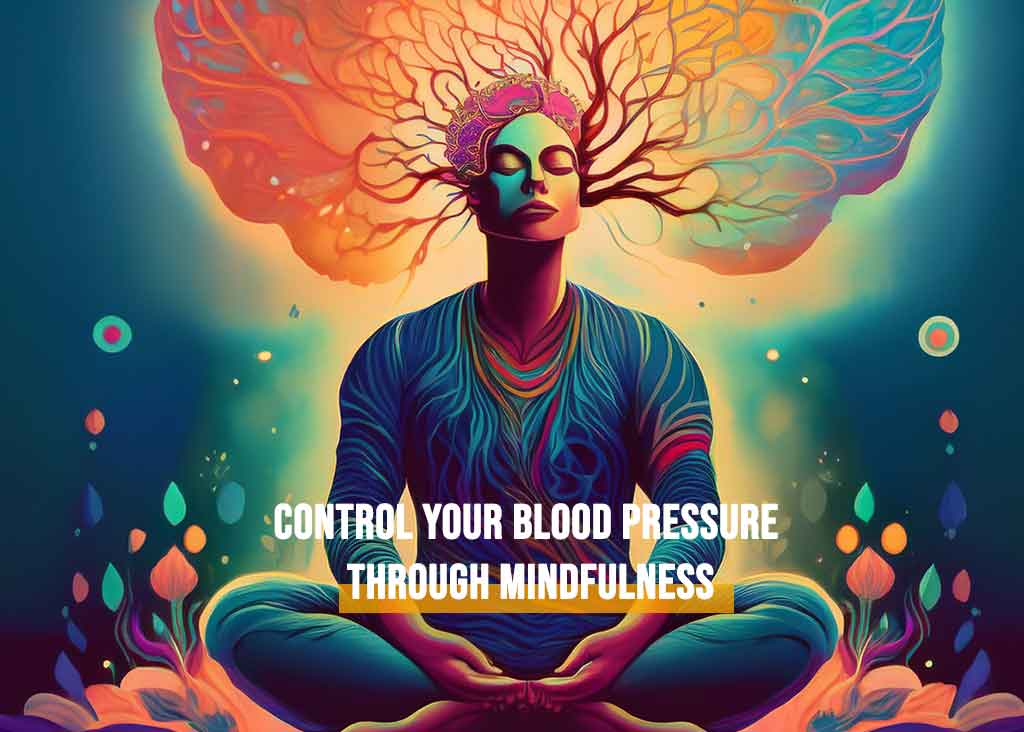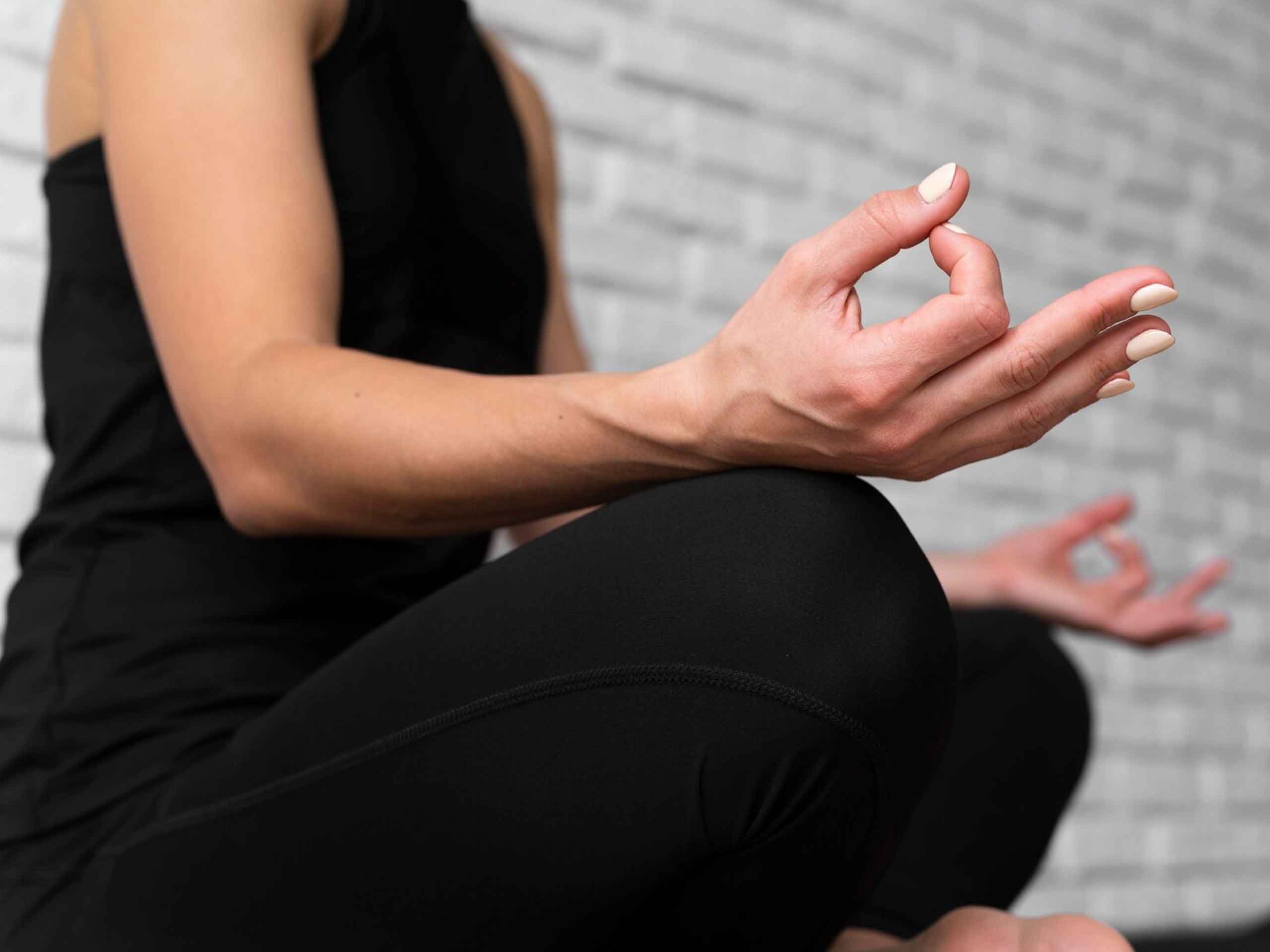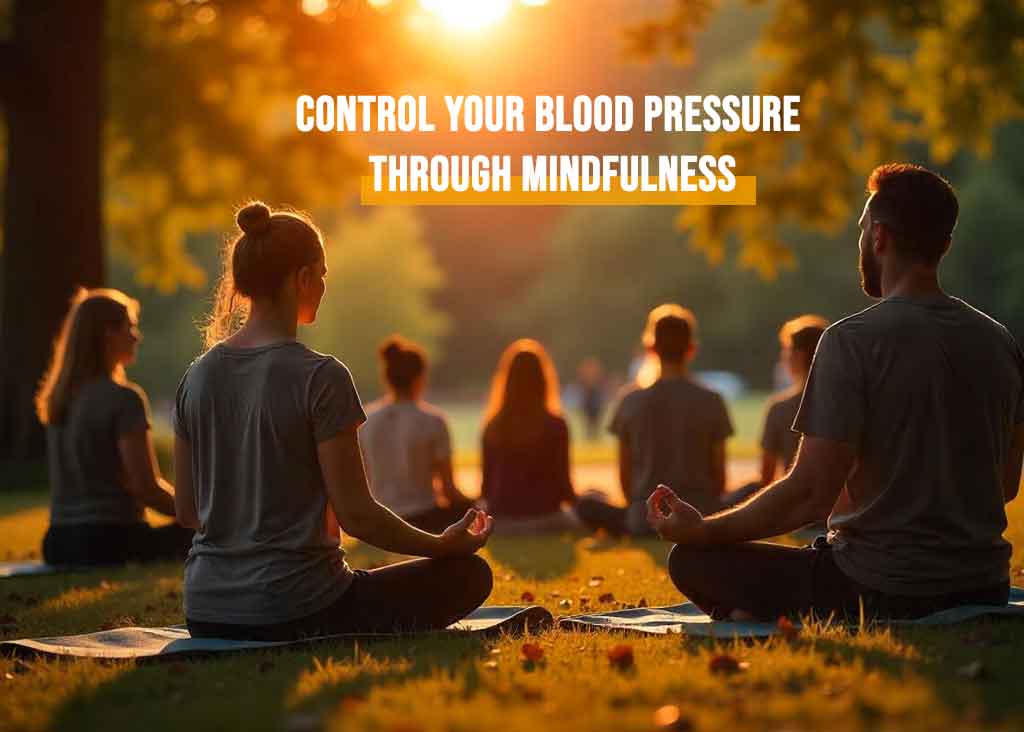Control Your Blood Pressure Through Mindfulness

High blood pressure, or hypertension, affects millions worldwide and is a leading risk factor for heart disease, stroke, and other serious health conditions. While lifestyle changes like diet and exercise are critical, an often-overlooked tool for managing blood pressure is mindful meditation. This practice, rooted in ancient traditions, has gained modern scientific backing for its ability to reduce stress and promote cardiovascular health. In this blog, we’ll explore how mindful meditation can help lower blood pressure, the science behind it, and practical ways to incorporate it into your daily routine.
Understanding Blood Pressure and Stress
Blood pressure measures the force of blood against your artery walls. It’s recorded as two numbers: systolic (pressure during heartbeats) and diastolic (pressure between heartbeats). Normal blood pressure is typically below 120/80 mmHg, while hypertension is consistently 130/80 mmHg or higher.

Stress is a major contributor to elevated blood pressure. When stressed, your body releases hormones like cortisol and adrenaline, which temporarily increase heart rate and constrict blood vessels, raising blood pressure. Chronic stress can keep these levels elevated, straining your cardiovascular system. Mindful meditation counters this by activating the body’s relaxation response, reducing stress hormones and promoting calmer, healthier blood flow.
The Science Behind Mindful Meditation and Blood Pressure
Research supports the link between mindfulness and lower blood pressure. A 2019 study published in Hypertension found that mindfulness-based stress reduction (MBSR) programs significantly reduced systolic and diastolic blood pressure in participants with hypertension. Another 2020 meta-analysis in The Journal of Clinical Hypertension showed that regular meditation practices, including mindfulness, led to modest but consistent blood pressure reductions, particularly in those with high stress levels.
Mindful meditation works by engaging the parasympathetic nervous system, which slows heart rate and dilates blood vessels, lowering blood pressure. It also reduces inflammation and improves endothelial function (the health of blood vessel linings), both critical for cardiovascular health.
What Is Mindful Meditation?
Mindful meditation involves focusing your attention on the present moment without judgment. It emphasizes awareness of your thoughts, feelings, and bodily sensations, often using techniques like deep breathing, body scans, or guided imagery. Unlike other stress-relief methods, mindfulness doesn’t require equipment or a gym—just a quiet space and a few minutes of your time.
How to Practice Mindful Meditation for Blood Pressure
Here are practical steps to start a mindful meditation practice tailored to lowering blood pressure:
- Start with Deep Breathing
- Why it works: Slow, controlled breathing reduces heart rate and promotes relaxation, directly lowering blood pressure.
- How to do it: Sit comfortably in a quiet space. Inhale deeply through your nose for 4 seconds, hold for 4 seconds, and exhale slowly through your mouth for 6 seconds. Repeat for 5–10 minutes daily.
- Tip: Focus on the sensation of your breath moving through your body to stay present.
- Try a Body Scan Meditation
- Why it works:This practice reduces physical tension, which can contribute to high blood pressure.
- How to do it:Lie down or sit comfortably. Close your eyes and mentally scan your body from head to toe, noticing areas of tension or discomfort. Breathe into those areas, consciously relaxing them. Spend 10–15 minutes on this practice.
- Tip:Use free guided body scan meditations available on apps like Calm or Insight Timer.
- Practice Mindfulness-Based Stress Reduction (MBSR)
- Why it works:MBSR combines mindfulness meditation and yoga, proven to lower blood pressure by reducing stress hormones.
- How to do it:Enroll in an 8-week MBSR program (available online or in-person) or practice at home by combining mindfulness meditation with gentle stretches. Focus on being fully present during each movement or breath.
- Tip:Start with 10 minutes daily and gradually increase to 20–30 minutes.
- Incorporate Loving-Kindness Meditation
- Why it works:This practice fosters positive emotions, reducing stress and improving heart health.
- How to do it:Sit quietly and repeat phrases like “May I be healthy, may I be calm” while visualizing yourself, then extend these wishes to others. Practice for 5–10 minutes.
- Tip:Combine with deep breathing for enhanced relaxation.

Tips for Success
- Consistency is key: Aim for 10–20 minutes daily. Even short sessions can yield benefits over time.
- Create a routine: Meditate at the same time each day, such as morning or before bed, to build a habit.
- Use technology: Apps like Headspace, Calm, or free YouTube guided meditations can provide structure.
- Combine with lifestyle changes: Pair meditation with a heart-healthy diet (e.g., DASH diet), regular exercise, and adequate sleep for maximum blood pressure benefits.
- Consult your doctor: If you’re on blood pressure medication, meditation should complement, not replace, prescribed treatments.
Real-Life Benefits
Beyond lowering blood pressure, mindful meditation improves mental clarity, reduces anxiety, and enhances sleep quality—all of which support overall well-being. For example, Sarah, a 45-year-old teacher, struggled with hypertension and chronic stress. After incorporating 15 minutes of daily mindfulness meditation, she noticed her blood pressure dropped from 140/90 to 125/80 within three months, alongside feeling calmer and more focused.
Common Myths About Meditation
- Myth: “I need to clear my mind completely.”
Truth: Mindfulness is about observing thoughts without judgment, not eliminating them. - Myth: “It takes too much time.”
Truth: Even 5–10 minutes daily can make a difference. - Myth: “I’m too busy to meditate.”
Truth: Meditation can be done anywhere—while sitting at your desk, during a commute, or before bed.
Final Thoughts
Mindful meditation is a powerful, accessible tool for lowering blood pressure and managing stress. By devoting just a few minutes every day, you can get scientifically proven advantages ranging from soothing your nervous system to enhancing heart health. Start small, stay consistent, and pair meditation with other healthy habits for the best results.
Join our BeejManta meditation community today and take the first step towards a healthier, more balanced you.
Note: This is for informational purposes only and should not replace professional medical advice. Always consult a healthcare professional before starting any new treatment or session.
Photo: @Freepik, @unsplash @MicrosoftDesigner

